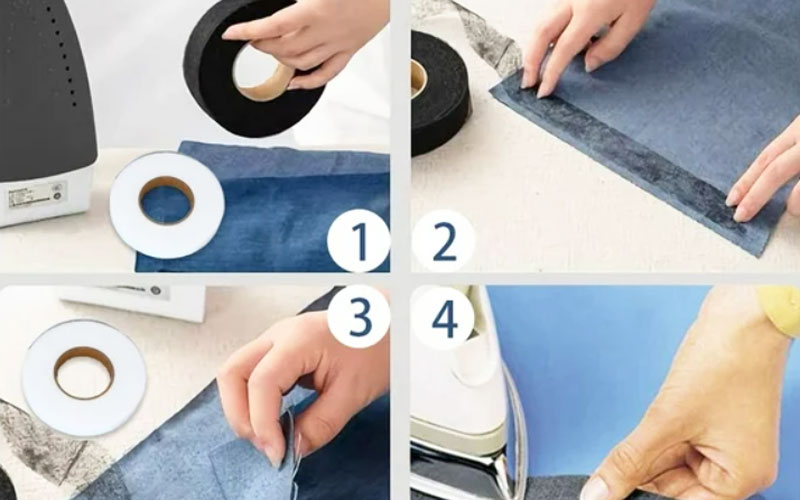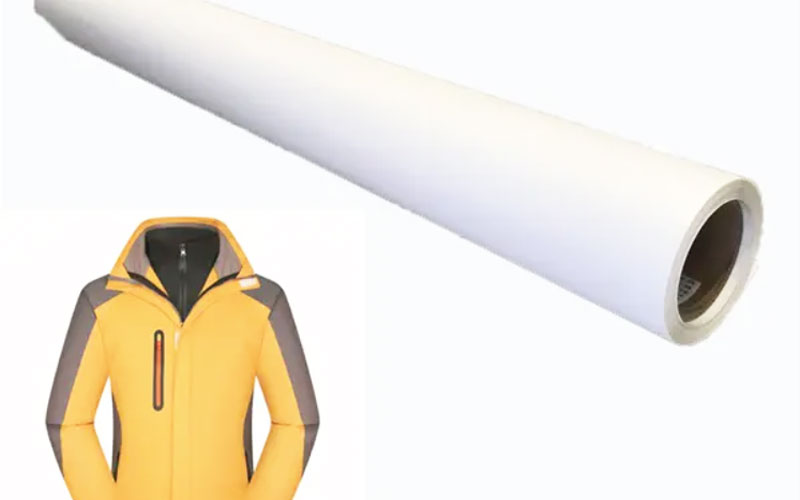The bonding film market has grown rapidly in recent years, with a notable surge in demand from the apparel and fashion industry. As clothing manufacturers seek smarter, lighter, and more sustainable alternatives to traditional stitching and adhesives, bonding films have emerged as a game-changer. These thin layers of thermoplastic adhesive are applied between fabrics to provide strong, seamless, and flexible bonds. Whether it’s for sportswear, outerwear, lingerie, or high-fashion garments, bonding films are reshaping how designers and factories think about construction.
In this article, we will explore the bonding film market in the apparel sector, focusing on key applications, benefits, industry trends, innovations, and challenges shaping its future.

1. What is Bonding Film in Apparel?
In the context of fashion and textiles, bonding films are thermoplastic adhesive layers that can be heat-pressed or laminated between fabrics. Once activated, they create a durable and elastic bond that replaces traditional sewing, gluing, or taping.
Thickness: Typically ranges from 30μm to 100μm depending on fabric type.
Materials: Commonly made from polyamide (PA), polyurethane (PU), polyester (PES), or modified polyolefins.
Form: Supplied as rolls or sheets, easy to cut and apply in automated garment production.
Instead of bulky seams or chemical-heavy glues, bonding films provide an invisible, lightweight, and breathable solution.
2. Why Bonding Film Matters in Apparel
The apparel industry faces growing challenges in performance, aesthetics, and sustainability. Bonding films address these needs in several ways:
2.1 Seamless Design
Consumers now favor sleek, minimalistic garments without visible stitch lines. Bonding films make clean seams and invisible joins possible.
2.2 Comfort and Flexibility
Unlike rigid adhesives, bonding films stretch with the fabric, maintaining comfort and fit for activewear and sports apparel.
2.3 Durability
Bonded seams are resistant to washing, dry cleaning, and daily wear. This improves garment longevity, aligning with sustainability goals.
2.4 Lightweight Construction
By reducing stitching and overlapping seams, bonding films help manufacturers save fabric and reduce garment weight.
2.5 Eco-Friendly Alternatives
Water-based and solvent-free bonding films reduce the industry’s dependency on toxic adhesives, making them an environmentally safer option.
3. Key Applications of Bonding Films in Clothing
Bonding films are versatile and used across multiple apparel segments. Below are the main areas where the bonding film market is expanding:
3.1 Sportswear and Activewear
Seamless yoga pants, leggings, and compression tops
Waterproof and breathable running jackets
Bonded zippers and reflective trims
3.2 Outdoor and Performance Apparel
Ski jackets and mountaineering gear
Seam-sealed raincoats with durable water repellency
Lightweight windbreakers
3.3 Intimate Apparel
Bonded bras and panties with no visible seams
Adhesive films used for lace bonding in lingerie
Skin-friendly bonding for sensitive fabrics
3.4 High-Fashion and Luxury Garments
Clean-cut dresses without stitch marks
Decorative panels joined invisibly
Structured garments with hidden reinforcements
3.5 Footwear and Accessories
Though primarily focused on garments, bonding films are also applied in shoes, caps, and bags, helping brands maintain design continuity.
4. Global Bonding Film Market Size and Growth in Apparel
The bonding film market in the textile and apparel sector has been growing at a strong pace. According to industry research:
Market Value (2024): Estimated at over USD 1.3 billion for apparel-related uses.
Growth Rate: CAGR of around 7–8% (2024–2030).
Regional Leaders:
Asia-Pacific (China, Vietnam, Bangladesh): Strong adoption due to being global garment manufacturing hubs.
Europe (Italy, Germany, France): Focus on high-fashion and luxury apparel using bonding films for premium finishes.
North America: Growth driven by outdoor and performance brands.
Market Drivers:
Demand for lightweight, comfortable clothing.
Rising sustainability regulations in garment production.
Consumer demand for premium, seamless fashion.
Technological innovations in thermoplastic adhesives.

5. Advantages of Bonding Films Over Traditional Methods
| Feature | Bonding Film | Sewing/Stitching | Liquid Adhesives |
|---|---|---|---|
| Aesthetic Appeal | Seamless, invisible finish | Visible stitches | Can leave residue |
| Fabric Flexibility | High elasticity | Limited by thread strength | Often rigid |
| Durability | Strong, wash-resistant | Strong but may fray | May weaken over time |
| Comfort | Smooth against skin | Seams may irritate | Can stiffen fabric |
| Eco-Friendly Options | Solvent-free films available | Neutral | Often solvent-based |
| Production Speed | Fast with automation | Labor-intensive | Requires drying/curing |
6. Innovations Driving the Bonding Film Market in Apparel
The apparel industry is pushing bonding film manufacturers toward constant innovation. Current R&D focuses include:
6.1 Breathable Bonding Films
Special formulations that allow air and moisture transfer without sacrificing adhesive strength. Essential for activewear.
6.2 Recyclable Films
Films compatible with mono-material garments to simplify textile recycling.
6.3 Low-Temperature Activation
Films that bond at lower heat to protect delicate fabrics such as silk, chiffon, and lace.
6.4 Smart Functional Films
Integration with sensors or conductive threads, enabling smart clothing in sports and healthcare.
6.5 Water-Based Adhesive Layers
Reducing reliance on solvent-based adhesives, supporting eco-label certifications.
7. Challenges Facing the Bonding Film Market
While promising, the bonding film industry must overcome hurdles to achieve full-scale adoption in apparel:
Cost Factor: Bonding films can be more expensive than traditional sewing, making them challenging for low-cost garments.
Technical Skill Requirement: Garment factories need specialized machines and training for application.
Compatibility Issues: Not all fabrics bond well with standard films, requiring tailored solutions.
Sustainability Concerns: Although more eco-friendly than many adhesives, not all bonding films are fully recyclable.
8. Case Studies: Bonding Film in Action
8.1 Sportswear Brand Example
A leading global sportswear company uses PU-based bonding films in its premium leggings. The result is seamless, chafe-free, and stretchable pants that outperform stitched versions.
8.2 Luxury Fashion House
A European high-fashion label incorporated bonded hems and decorative panels in evening gowns. The clean look elevated aesthetics, appealing to high-end consumers.
8.3 Outdoor Gear Manufacturer
For ski jackets, waterproof bonding films ensured strong seam-sealing and extended product life under extreme weather conditions.
These examples highlight how bonding films are already transforming apparel production at different market levels.

9. Future Outlook of Bonding Film Market in Apparel
Looking forward, the bonding film market in apparel is expected to evolve along several directions:
Greater Adoption in Mass Production: As costs drop and technology matures, bonding films will be more widely used in affordable clothing.
Sustainability Priority: Demand for recyclable and biodegradable bonding films will increase, aligned with global green initiatives.
Integration with Automation: Advanced garment machinery will integrate bonding film application, reducing labor reliance.
Premium Market Growth: Luxury fashion and performance apparel will continue leading innovation.
By 2030, experts predict bonding films could become a mainstream garment construction method, much like stitching is today.
Conclusion
The bonding film market in apparel is at an exciting stage of growth. From seamless yoga pants to high-fashion gowns, bonding films enable designers and manufacturers to combine aesthetics, comfort, and sustainability. Although cost and technical barriers remain, ongoing innovation in adhesives, automation, and eco-friendly materials is paving the way for broader adoption.
As fashion evolves towards lighter, cleaner, and greener solutions, bonding films will not only transform garment design but also redefine global standards in apparel manufacturing.
Want to get bonding film for clothes? Welcome to contact Alster!
